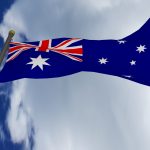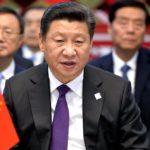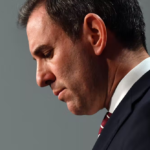Reversing the Model
Sometimes working backwards is the best way to move ahead.
It's a scary time to start a business, and it would seem a particularly crazy time to start a new business that has no clear vision of how it will ever make money. Nevertheless, this is what I've done, and I'm convinced it is the right approach.
What makes me so sure I'm onto a winner? To begin with, learning from my past failure.
In the lead up to the 2004 Australian Federal election I started up a business, with the spectacularly bad name of "Talent Finders for Media". I was looking for a way to help journalists find people in specific demographics. I knew there was a demand. Having worked around government, PR and media for the last fifteen years people were constantly asking me "if I knew someone" who fitted a particular profile. So in fact I was already servicing the demand in an informal, unpaid way and Talent Finders was an attempt to turn that into an income stream.
I built a simple web-platform and spread the word. My instinct was that it would never work if you charged subscribers, so I decided that journalists would pay a small fee for lodging a request. It never took off. Plenty of members subscribed but there wasn't the uptake from the media end.
Where did I go wrong? It seems pretty clear the mistake was in expecting the media to pay to use the service. Maybe it would have worked in 1994, but not by 2004.
The idea was good but the model was wrong. It was wrong because I was still fixated on the old fashioned notion I needed to get paid straight away. The new paradigm is to build something that works. Once there is a critical mass of people using your service it becomes valuable.
Take the social networking service Twitter, a business that doesn't make any money yet but is worth a fortune. It's still not clear how Twitter will eventually monetise, however its value is such that it inevitably will. In fact that value alone is sufficient to create wealth.
I'll be looking to Twitter to see how they manage the leap. The transition can be tricky. Facebook experienced a huge backlash against the introduction to its new terms and conditions, to the point where they repealed them. After listening to the users they're re-jigging the model and suceeding.
As far as the technology goes, with Reverse PR, I'm operating on the KISS principle to keep costs down, and I haven't given up the day job yet. What I am investing is my time, experience and my contacts; which is no small investment.
I've been inspired by a business from the USA, entrepreneur Peter Shankman's Help a Reporter Out (HARO) http://www.helpareporter.com/, and also by a Canadian venture Brendan Dermody and Greg Majster's Journalist's Source http://journalistsource.ca/
Peter Shankman has done very interesting things with HARO, and I've been seeking his advice and leaning from his past experiences.
Those businesses, like my new venture Reverse PR connect people for free. I call it the "good karma" effect, and everyone who participates can get some.
HARO recently celebrated its first anniversary and has 64000 subscribers on their daily email list. Subscribers receive three emails a day, morning, lunchtime and afternoon, with no less than 15 queries in each email. It takes a few minutes for subscribers to read and determine if they are the sort of contact a reporter is looking for. If there's a match it will only take a few minutes to contact them, and the rewards can be enormous.
By being the right contact for a story, rather than trying to build a story around your own press release, you literally get the sort of publicity money can't buy. What I love about it is the way it turns the whole PR industry on its head, hence the name Reverse PR.
Hopefully later this year I'll be back here blogging about how Reverse PR has evolved. In the meantime, I'm enjoying connecting people in what is a natural continuation of my mission to help people do things smarter, not harder.
You can check it out at http://www.reversepr.com/
Mark Croxford is a Canberra based government & media relations practitioner. He helps business work effectively with government and media to get great outcomes for their business. Mark is a former press secretary to Howard Government Ministers Bruce Scott and Mark Vaile, and a freelance Canberra spinner and lobbyist. He's also worked extensively with Senator Fiona Nash, providing strategic political and policy advice to Nationals Senators. He has also written and co-authored a number of publications in the government affairs / media relations sector; including Talking to the Media, Dealing with Federal Parliament and Dealing with and/or appearing before Parliamentary Committees.Mark is married to Cath and has four children. He enjoys all of Australia's major football codes, but confesses to not understanding soccer despite finally getting across the off-side rule during the 2006 World Cup.













